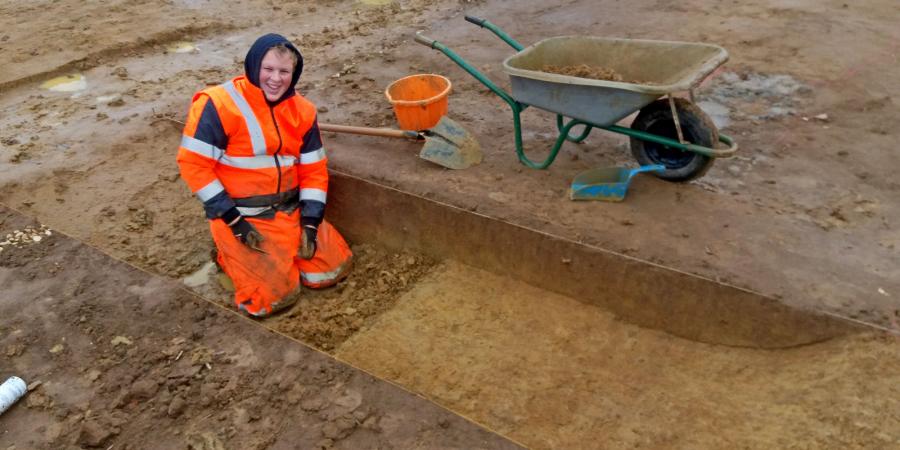At Wessex Archaeology, our staff expertise spans from built heritage to marine archaeology – and everything in between. In our new blog series, we’re opening the doors of the Wessex Archaeology offices and site cabins, offering an insight into the day-to-day lives of our 350 staff members and the high-quality services they enable us to deliver.
First up, it’s one of our newest members of staff, Finn Cresswell, who joined the team in late July as a Fieldwork Technician.
The parking lot and tool sheds are a bustle of activity in the blue half-light of a 7o’clock Monday morning. Orange coated figures pile into various vehicles and set off, travel mugs steaming, to various excavations across the country.
On our arrival we are given an induction to the site. Hearing about the archaeological potential of the excavation is fascinating, with new relationships between features and possible dates being uncovered throughout the excavation. Seeing how the work of a Field Technician with little experience can benefit the site and Wessex Archaeology as a whole is inspiring.
Working alongside machine drivers also reinforced the idea that an array of different vocations, skills and people all have a part in archaeological work. After the site has been stripped of its top and subsoil we are set to work on various features, with veteran field staff and managers identifying key areas of investigation.
After being given a feature to excavate we clean the area back to clearly see its limits, setting up a section line at the extent of the slot. Archaeology is often varied and unique, with each posthole for a possible roundhouse or section through a ditch having a story to tell. Over the course of excavating the feature, field staff have the opportunity to discover and record them. I am lucky to have the opportunity to engage with this material first hand, uncovering finds, be they worked flint, ceramic or pieces of bone. Finding something like a thumbprint in the clay of a pot or a reworked piece of flint demonstrates the humanity of archaeology. These human touches bring the worlds of their people closer to the excavator and, hopefully, the public interacting with them later down the line.
It is easy to only focus on the patch of dirt you are excavating; however, seeing the site around it and the activity of the other field staff demonstrates time and time again how we cannot view a feature, site or archaeology itself as isolated. Each informs a greater pattern of human activity and history.
The excavated feature is recorded a number of ways, photographically, through GPS, drawing and writing about the various cuts and fills present. This provides ample opportunity to discuss the feature, from how it was created, through to its use, to possible decommissioning. This will be properly identified and written up in reports and later work; however, it again shows how important every step of the archaeological process is.
If any help is needed I have found my colleagues eager to help and patient when working through new concepts or tasks with me. As working in the field is varied, this was a common occurrence in my first few months at Wessex, but I always felt supported and moved on understanding more of the processes around excavation.
At the end of the day, we head back to the accommodation if we are working away from home, cooking together and living as a team; ready for the next day’s discoveries.
By Finn Cresswell, Fieldwork Technician
